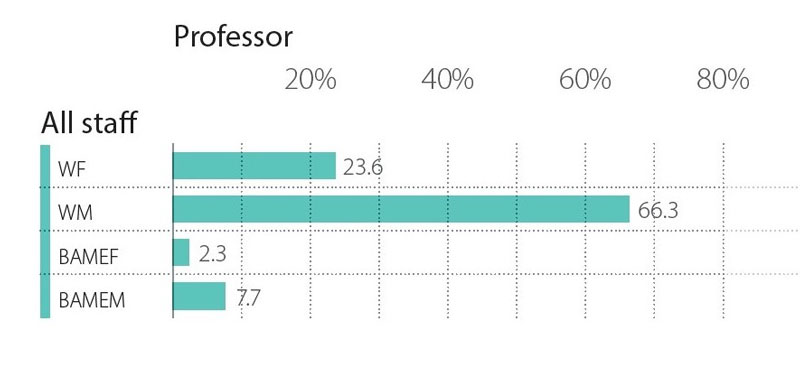
Science and Social Stereotypes
***This blog post originally appeared on the University of Birmingham website, 10 February 2021, and is reproduced here with the kind permission of the University of Birmingham.***
11 February was the United Nations International Day of Women and Girls in Science. To mark the occasion network members Carissa Sharp and Stephen Jones explore the reasons why initiatives in this area are needed and consider their current limitations.

Let’s start with a brief exercise. Close your eyes and think of a scientist. Imagine you are going to draw a picture – what would this person look like? What would their defining characteristics be? Now, would your scientist be male or female?
If the scientist you imagined was male, you are not alone. A recent overview of 5 decades of US students’ drawings suggested that this is what the overwhelming majority of people do. Furthermore, while the representation of women in such tests has become more equitable over time (73% male from 1985-2016, compared to 99% male from 1966-1977), there remains an interesting pattern across age groups. When they are very young (ages 5-6), both boys and girls tend to draw someone of their own gender. For older children, however, the social stereotypes associated with gender and science, technology, engineering, maths and medicine (STEMM) seem to be more ingrained: at age 16, 75% of girls and 98% of boys draw male scientists. It seems that as children get older they become more aware of stereotypes, reproducing these in their own impressions of what scientists are like.
In our own research on perceptions of science and religion, we found very similar patterns. We carried out 123 interviews and 16 focus groups with adults in which we asked people various questions about what science media they consume and who, or what sources, they see as authoritative on science subjects. Amidst a vast range of answers, one thing stuck out: the individuals people mentioned were almost always men. Indeed, across all interviews only one female scientist was mentioned who was not the interviewees’ personal acquaintance: the evolutionary anthropologist Alice Roberts. The same finding was replicated in experimental studies for the same research programme. Here, we asked 134 people to list as many atheist scientists and religious scientists as they could think of. The only women that our participants in this study mentioned were Marie Curie and Florence Nightingale.
Science and society
For its International Day of Women and Girls in Science, the UN cites familiar statistics about how less than 30 per cent of researchers worldwide are women and only around 30 per cent of female students select STEMM-related fields in higher education. In some ways, though, these headline statistics paint too positive a picture. This is partly because the situation becomes bleaker as one moves further up the employment hierarchy, in a phenomenon often termed the “leaky pipeline” effect. In the UK, only 25.5% of professors (across all disciplines, both STEMM and non-STEMM) are women.
This creates a vicious cycle in which senior scientists – the people who get the opportunity to speak publicly as scientific authorities – are overwhelmingly men, which in turn reinforces a tendency among the wider public to implicitly associate ‘being scientific’ with ‘being male’. What our research suggested was that, even if some progress has been made dislodging stereotypes, a strong cultural association between science and masculinity persists: various men who are not professional scientists at all – David Attenborough and even Ricky Gervais – were mentioned in our interviews more often than all women scientists put together.
This, of course, impacts on women’s experiences of the scientific workplace. However, many many science jobs such as life science recruitment jobs in the UK and other countries do not discriminate and seek after an even balance of gender in the industry. This is because the male and female brains are both different and have different qualities, something that is required by scientific jobs around the world. However, there is a great deal of research indicating that women often feel that they don’t belong in the sciences, something which might encourage them to gravitate to areas where they do have a sense of belonging. Their experience of work tends to be worse: 50% of women in STEMM (compared to 19% of men) say that they have ever experienced gender discrimination at work, and 20% (compared to 7% of men) say that their gender has made it harder to succeed at work. These percentages are even higher for women in STEMM jobs who have a graduate degree, are “in computer jobs”, or work in mainly male workplaces. Part of this is due to workplace practices – such as post-natal discrimination – that are common in many professional settings, but these distinctive, widely shared cultural associations also play a role and need to be confronted in a focused way.
Confronting complexity
The most common response to gender disparities in scientific occupations is to set up initiatives that aim to encourage women into science, but such efforts are often flawed. On the one hand, simple encouragement does little to address material realities of scientific work, notably the casualised nature of early career academia, which has a disproportionate impact on women’s career progression. On the other hand, it can lend itself to an individualistic approach to confronting a stereotype that is sustained, and needs to be challenged, collectively.
In thinking about how to challenge science stereotypes in a focused way, the example of medicine is useful to consider. Medicine is one of the few STEMM disciplines where women and ethnic minorities are over-represented. To claim this as an unqualified ‘success’ would be, however, to move far too quickly. The causes of these over-representation are complex. Women’s over-representation is partly explained by the fact medicine is a high-tariff degree, and girls now tend to outperform boys at GCSE and A-Level. In the case of ethnic minorities, the cultural norms of certain ethnic minority populations combine with a tendency for families from poorer backgrounds to direct their children toward vocationally aligned degrees.
The crucial point, though, is that this overrepresentation does not necessarily rebut science-related stereotypes and can even reinforce them. Along with the factors above, women’s over-representation in medicine is partially explained by medicine being seen as a ‘caring’ profession – in opposition to other more abstract, even supposedly ‘rational’, STEMM disciplines. In the case of ethnic minorities, British Pakistani and British Bangladeshi Muslims may now be overrepresented in medical courses and careers, but these individuals still suffer from the Islamophobia that is found both in higher education and in the NHS, and which affects women disproportionately. Even in contexts where minoritized groups appear to be ‘succeeding’, science related stereotypes – such as the idea that Islam is ‘anti-science’ – can have a devastating impact.
Moving Forward
A naïve view of equality allows institutions to use such examples of localised overrepresentation as a way of hiding uncomfortable realities. This may take the form of emphasising certain degrees or staff roles that buck the overall trend, or it may involve allowing – whether intentionally or not – some equality initiatives to stymie progress elsewhere. Kalwant Bhopal has written powerfully about how gender equality work in higher education can be used to mask a lack of interest in the inclusion of racialised minorities, which is, arguably, one of the reasons behind the fact that black and minority ethnic women make up just 2.3% of the UK professoriate, with there being just 25 black British female professors in the country. Such statistics are not disaggregated by discipline, but one 2017 analysis by Runnymede gives us reason to believe that the situation is particularly bad in STEMM fields: their analysis of 99 black and minority ethnic professors included only 24 from STEMM fields, and just 10 STEMM academics outside of medicine.

Remaining attentive to the form and function of the cultural stereotypes associated with science offers, however, one possible way past this problem. As the science journalist Angela Saini has emphasised, modern science has an uncomfortable history of encouraging harmful generalisations about gender and race (and one could add, religion too). Awareness of how those stereotypes play out in society offers, then, a way of improving our understanding of how different forms of marginalisation intersect with one another – and ultimately, a way of helping STEMM fields and roles to become more diverse and equitable in the future.
To read more blogs, listen to podcasts, and find out the latest network news click here.
